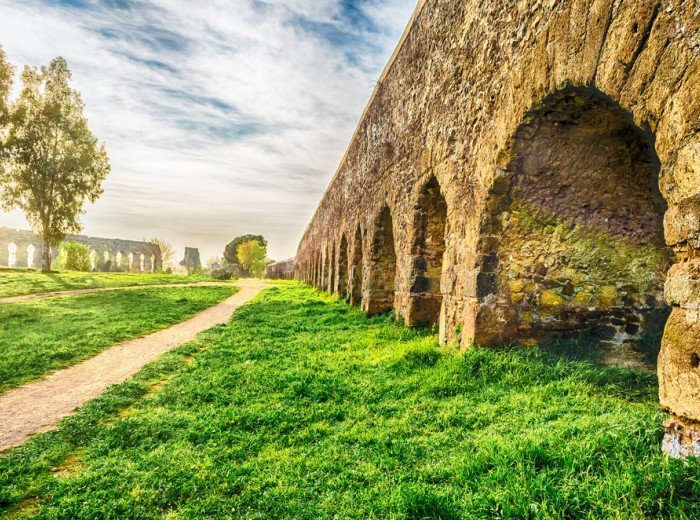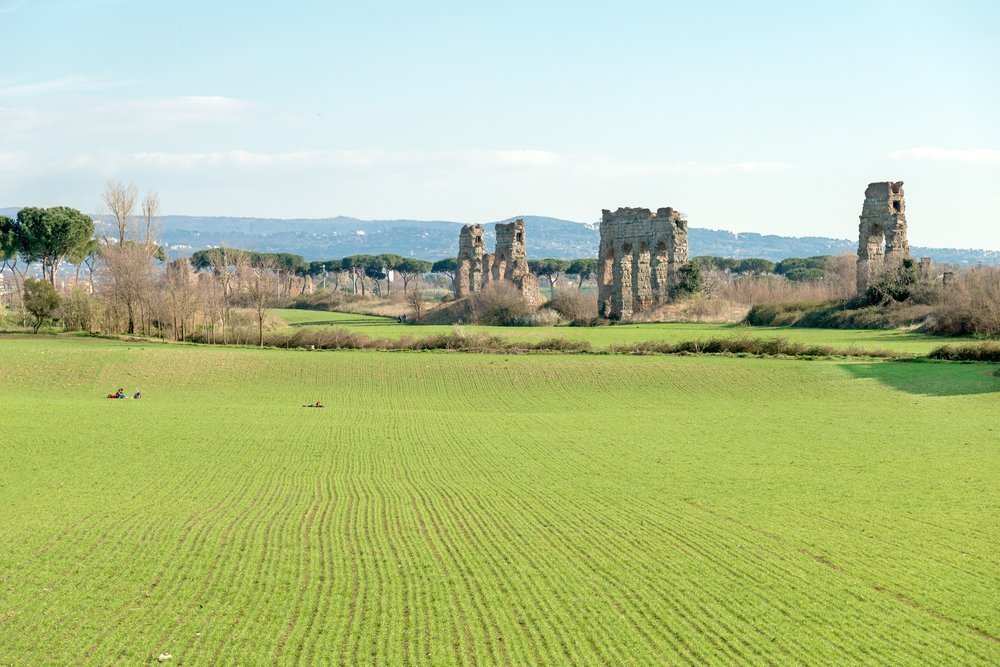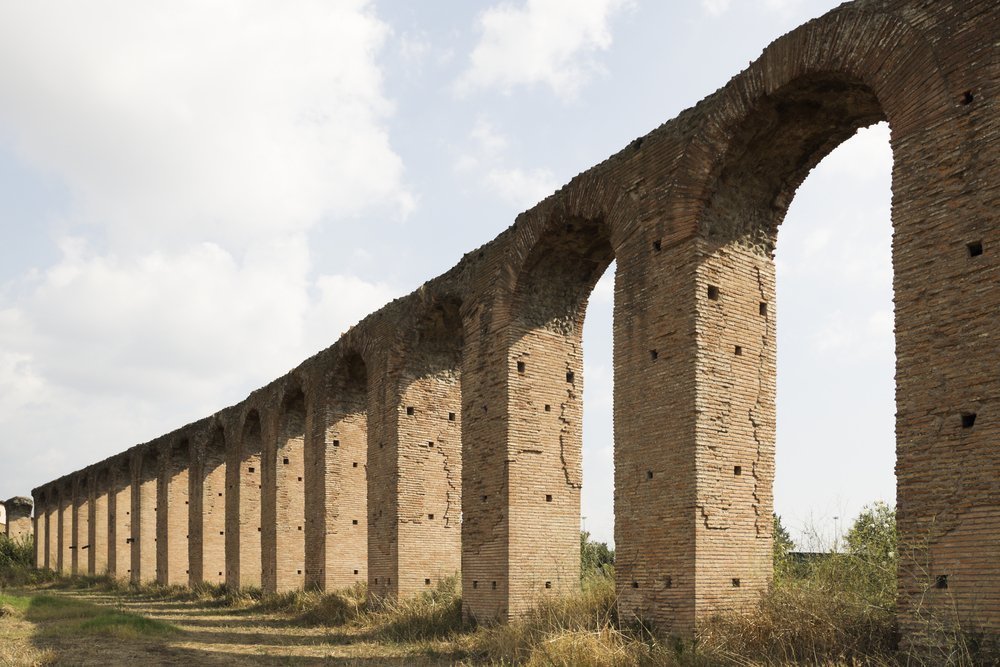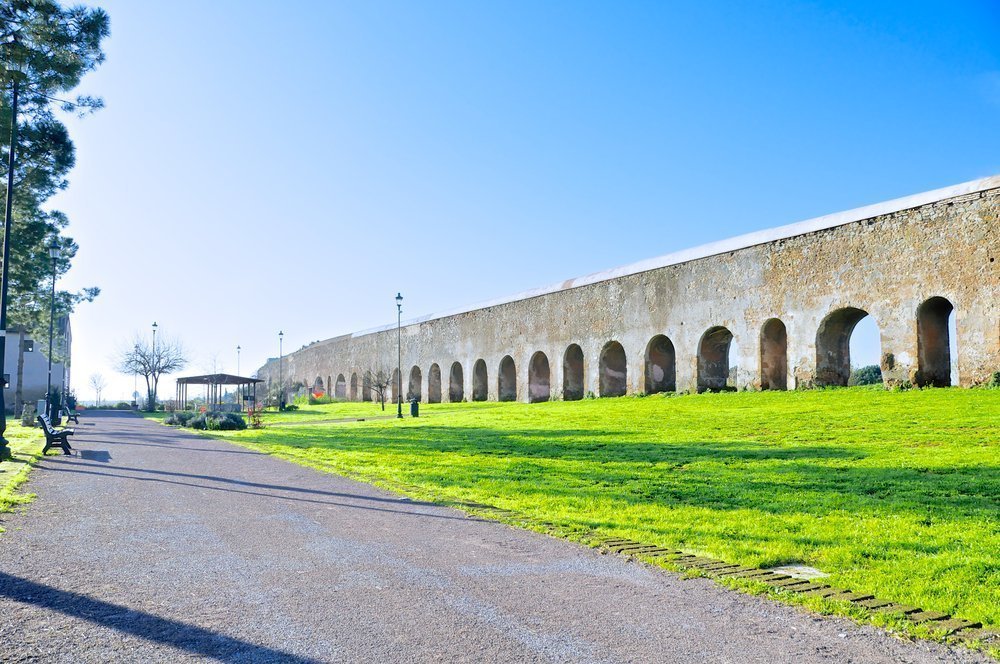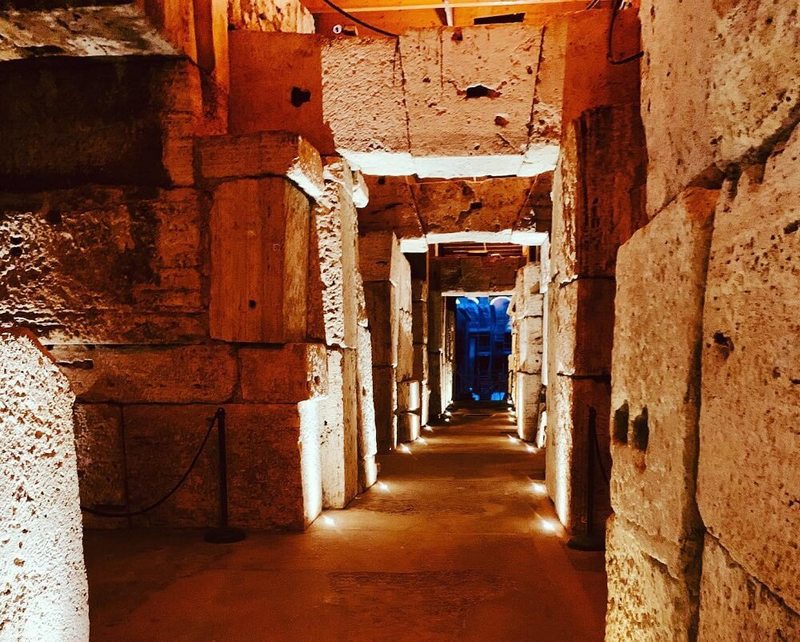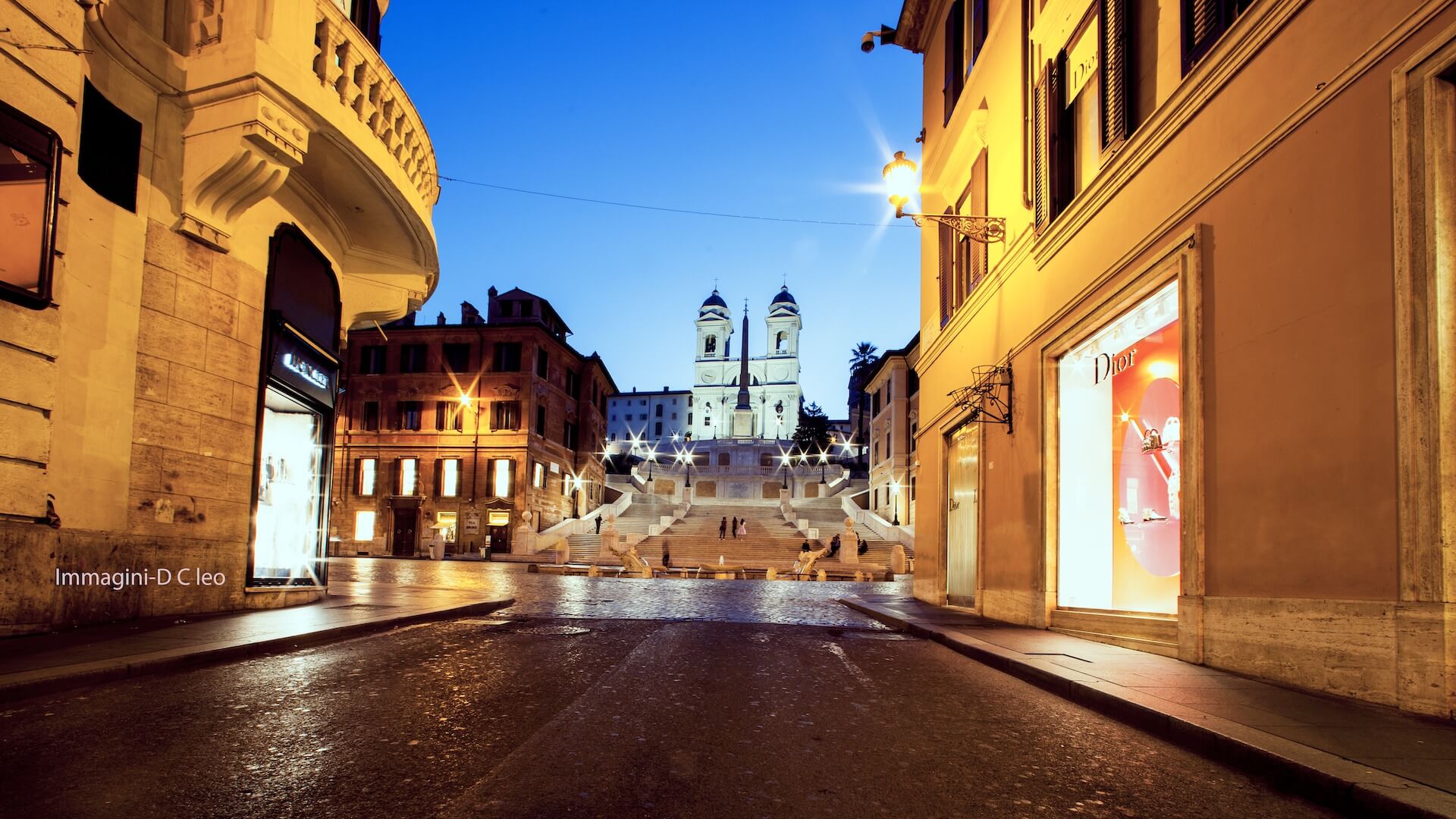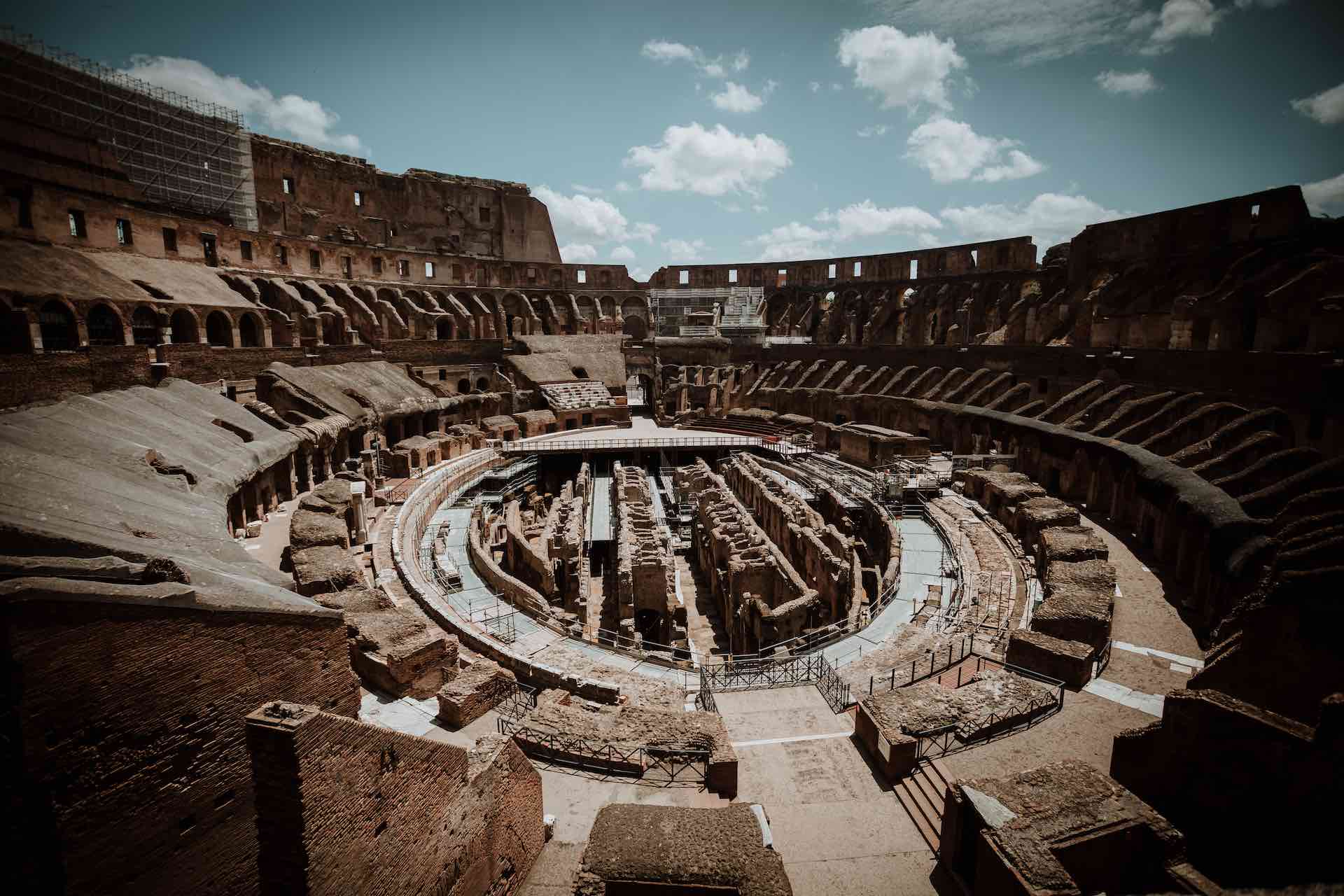When the water of the River Tiber proved insufficient for Rome’s growing population, the ingenious ancients had to improvise. As they couldn’t move their city to a water source they decided to bring the water source to them.
At the end of the fourth century BC, around 312 BC, several aqueducts were constructed which carried water from nearby springs to all parts of the expanding city. Running ever downwards at a finely measured gradient, the water borne by these aqueducts fed private homes and public fountains, providing the city with a fresh water supply.
Walks Inside Rome has written this article to share the story of these aqueducts and how they revolutionized the city.
Anio Novus Aqueduct
The Anio Novus Aqueduct was built by the emperor Caligula in 38 AD to bring the waters from the river Aniene to Rome’s Porta Maggiore. This aqueduct had the longest route from its source to Rome and intersects with another aqueduct: the Aqua Claudia.
Appio Claudio Aqueduct
The Appio Claudio was the ancient city’s eighth aqueduct built in Rome and one of the most important. Drawing its water from two different sources, it extended for a staggering 45 miles. The remains of the Appio Claudio aqueduct consist of monumental arches of stone, red tuff and travertine.
Aqueduct of Quintili
Constructed to feed the enormous Villa of the Quintili, which was so big that when workers unearthed it they believed they’d discovered another city, the Aqueduct of the Quintilifed the villa’s many fountains, swimming pool, and spas. It consists of just 120 arches today, stretching some 700 meters across the Capanelle neighborhood.
Felice Aqueduct
Built in 1583 to supply the areas of Esquiline and Quirinal hills, the Felice Aqueduct is one of Rome’s more recent aqueducts. It was commissioned by Pope Sixtus V (whose real name was Felice Peretti) and it ran 15 miles from its source at the springs of Pantano Borghese to its terminus at the Quirinal’s Fontana dell’Acqua Felice.
To find out more about the fountains that are fed by these aqueducts, check out are article about the most beautiful fountains of Rome.

